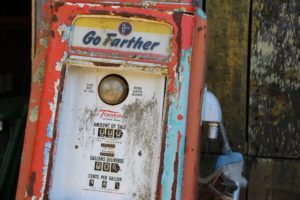
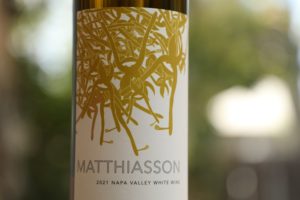
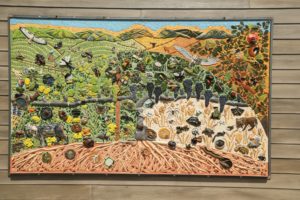 Matthiasson Winery was founded and is owned by two farmers, husband and wife Steve and Jill Matthiasson. Steve was born in Winnipeg, Canada and is the viticulturist and winemaker, and Jill, originally from Pennsylvania, runs the business side of the operations while also farming a number of fruit trees which she used to sell at select farmers’ markets in the city of Napa. Both Steve and Jill have long been interested in farming; Steve was drawn to gardening while in college (he studied philosophy) and Jill studied botany and later worked for a family farming non-profit. Both met while in Davis while Steve was studying agriculture at UC Davis.
Matthiasson Winery was founded and is owned by two farmers, husband and wife Steve and Jill Matthiasson. Steve was born in Winnipeg, Canada and is the viticulturist and winemaker, and Jill, originally from Pennsylvania, runs the business side of the operations while also farming a number of fruit trees which she used to sell at select farmers’ markets in the city of Napa. Both Steve and Jill have long been interested in farming; Steve was drawn to gardening while in college (he studied philosophy) and Jill studied botany and later worked for a family farming non-profit. Both met while in Davis while Steve was studying agriculture at UC Davis.
They are known for their white wines but also produce several excellent reds. This small Napa Valley producer used to be well under the radar and visits were often with Steve and Jill. While both are often at the winery, production has grown significantly since their early days and they now employ a number of people including several wine educators.
Currently the Matthiasson’s own or manage approximately 85 acres of vineyards, primarily in Napa Valley but also selectively source grapes from outside of the county. They own three vineyard properties: Matthiasson, Phoenix and Cressida. Matthiasson Vineyard is located on the western side of the Oak Knoll District just north of the city of Napa and its encroaching suburbs. Previously planted entirely to Merlot, some very obscure for Napa Valley varieties now grow here focusing on grapes found in northeast Italy/Slovenia border including Refosco, Ribolla Gialla, Tocai Friulano and two rows of Schioppettino. And several traditional Bordeaux varieties, including a small percentage of Merlot along with Petit Verdot. In addition to grapes, a diversity of other crops are grown here including various fruit trees, olives and a giant avocado tree which is the largest avocado tree we have seen anywhere on the floor of the valley.
The Phoenix Vineyard is also in the Oak Knoll District and is planted primarily to Cabernet Sauvignon but also to Cabernet Franc and Merlot. And a two row section of an extremely unusual variety for Napa Valley, Pinotage. Cressida Vineyard on the Napa side of Carneros is 35 acres and is the home of their Vermentino. And it is a coveted site because the soils here are among the furthest south of the shale deposits found on the nearby Maycamas mountains – and to some extent mimics the soils at their Phoenix Vineyard.
Steve operates his own vineyard management consulting company (Premiere Viticulture) and has or is currently consulting for a diversity of premium clients including Chappellet, Stag’s Leap Wine Cellars, Spottswoode Winery, Dalla Valle Vineyards and Robert Sinskey. He is actively involved in the management of or critical vineyard decisions, including the vineyards they source grapes from for the Matthiasson wines.
There are a number of terms to describe healthy methods of farming. These are but not limited to: organic, regenerative, biodynamic, sustainable and promiscuous. Practices associated with each principle often overlap. The Matthiassons are on the forefront in Napa Valley of what we call a holistic approach to both farming and business – implementing healthy practices for their vineyards, employees, in the cellar and with their packaging.
While traveling to wine regions around the planet the most common concern we hear is that of increasing temperatures and or greater extremes in weather. As a result, reactionary practices must be implemented to maintain the quality of grapes. These can include harvesting early, changing the types of trellising, using misters, shade clothes or using products to reduce the temperature on the vines such as organic kaolin (clay).
However, there are proactive practices that if implemented as part of an international farming ethos will help mitigate the current increases in global temperatures. An integral part of this starts with the health of the soil and sequestering carbon. In the vineyards this includes no or little tilling of the soils (we have seen sites where no till is not practicable), minimizing the use of tractors (which compact the soils), composting and using no herbicides, pesticides or insecticides.
Vines are managed individually including how much water they are given with a goal of having fully automated watering systems in place. Molecular spore traps provide accurate spore counts of grapevine powdery mildew (GPM) which have helped more efficiently target where and when the vines need to be sulphured. Matthiasson also uses several autonomous-optional and electric Monarch tractors.
Other practices are also directly tied into their overall goals of minimizing carbon footprints including limiting the burning old vines when replanting, avoiding using capsules on their bottles and using lighter glass. And encouraging more bird life, bird boxes are located in select parts of their vineyards.
Matthiasson specializes in several wines including Chardonnay (their most produced wine), a couple of unusual for Napa Valley white wine bottlings and several red wines. Total annual production is currently around 10,000 cases; their first vintage was a 2003 blend of Cabernet Sauvignon and Merlot that was labeled as Napa Valley red wine.
Matthiasson’s varietal choices and wine making philosophy is uniquely refreshing in Napa’s current more linear and ‘riper’ dominated wine making environment. Steve and Jill grow and produce wines from a number of unique for Napa Valley varieties. Steve’s wines are balanced and food friendly and are well layered and complex but not to the point of losing these more subtle nuances in favor of ripeness and higher alcohol.
In addition, their judicious use of new oak ensure that the complexities found in the wines are from their vineyards not from the secondary influences of the barrels. One may call their wines lean, but that is way too loose and generic of a term. Perhaps it is only appropriate in describing their style when compared to high octane, fruit forward, high alcohol and opulent contemporary Napa Valley bottlings (both red and white) from other producers.
Select Wines
Whites
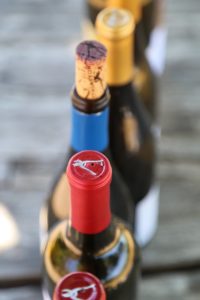
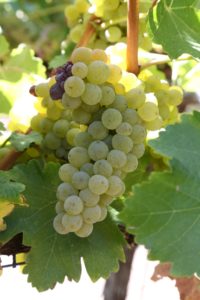 The Matthiasson Napa Valley White is a unique blend of Sauvignon Blanc and Sémillon along with two Italian varieties including Ribolla Gialla and Tocai Friulano. This wine was first produced in 2005 and is arguably their flagship white wine. Grapes for this wine were harvested from two vineyards in the often cooler southern part of Napa Valley including the Sauvignon Blanc and Sémillon from Ryan’s Vineyard in the Oak Knoll District and from Bengier Vineyard next to the entrance to Dry Creek Canyon on Redwood Road. Bengier Vineyard used to be called Vare Vineyard in honor of its previous owner, George Vare. We remember meeting with Vare years ago like it was yesterday and listening to his stories about stuck fermentations that particular year. Matthiasson has worked with this vineyard for many years.
The Matthiasson Napa Valley White is a unique blend of Sauvignon Blanc and Sémillon along with two Italian varieties including Ribolla Gialla and Tocai Friulano. This wine was first produced in 2005 and is arguably their flagship white wine. Grapes for this wine were harvested from two vineyards in the often cooler southern part of Napa Valley including the Sauvignon Blanc and Sémillon from Ryan’s Vineyard in the Oak Knoll District and from Bengier Vineyard next to the entrance to Dry Creek Canyon on Redwood Road. Bengier Vineyard used to be called Vare Vineyard in honor of its previous owner, George Vare. We remember meeting with Vare years ago like it was yesterday and listening to his stories about stuck fermentations that particular year. Matthiasson has worked with this vineyard for many years.
Grapes from each variety were whole cluster pressed and kept separate during fermentation until they were blended when the wine’s reached dryness. This wine was aged for 10 months in French oak barrels of which 15% were new (Boutes). The wine was not stirred and it did not go through secondary fermentation
The 2021 Matthiasson Napa Valley White Wine is a blend of 46% Sauvignon Blanc, 29% Sémillon, 23% Ribolla Gialla and 2% Tocai Friulano. This wine is medium straw in color; the bouquet offers aromas of citrus blossom, honeysuckle, lime, under ripe pineapple, lemongrass, straw and pineapple guava. This latter aromatic reminds us of the several decades of harvesting fresh guavas in the fall growing next to gravesites in the odd fellows cemetery in Santa Rosa, CA. As the wine warms up in the glass a light note of vanilla is revealed. Balanced across the palate, its supple, creamy and almost saline/briny texture is accompanied by energetic but not bracing acidity. This wine sports flavors of green apple, lemon juice, beeswax and grapefruit. The richness of flavor continues to persist for quite some time on the finish. We immediately thought of pairing this with Thai giant freshwater prawns accompanied by spicy nam prik. This bottling is 12% alcohol.
The 2013 Matthiasson White Wine is a blend of 55% Sauvignon Blanc, 25% Ribolla Gialla, 15% Sémillon, and 5% Tocai friulano. This wine is pale yellow in the glass with sweet aromatics including pineapple, peach/nectarine and citrus aromas and as it continues to open, it reveals notes of honeycomb. Clean and crisp with mineralities. Similar flavors to the aromas of the bouquet continue onto the palate. Easy drinking white wine. No malolactic fermentation. Texturally this wine feels nice on the palate – with some weight.
After LVMH purchased Joseph Phelps in 2022, they decided to pull out all the Scheurebe vines at the Phelps estate property. Tragic, as these vines dated from the early 1970s and were the only planting in Napa Valley. For decades Phelps made a beautiful dessert wine from those grapes. The last harvest was in 2023; Steve’s friend and fellow winemaker Scott Schultz of Sonoma County based Jolie-Ladie Winery got word Phelps was going to be pulling out the Scheurebe and offered 50% of these grapes to Steve. Each winery produced a dry bottling of this variety.
The 2023 Matthiasson Scheurebe Napa Valley (St. Helena) is a one-off wine and the last wine from these vines. This wine is medium gold. The bouquet offers a delicate fruit and floral elegance including of star jasmine, apricot, guava, peaches in light syrup, and beeswax/honeycomb. Let the aromatics open, as they keep changing and opening up to new layers including a citrus nuance. The palate reveals flavors of pear, red apple and pomelo. It is minerally and citrusy on the finish including flavors of lime juice. Its texture is somewhat saline. The wine was pressed and transferred to tank where it completed its fermentation before being moved to stainless steel barrels. Find a bottle if you can, this is the closing chapter on decades of one of Napa Valley’s most unique varieties.
The 2021 Matthiasson Napa Valley Chardonnay Linda Vista Vineyard is deep straw in color. If one has no idea of Matthiasson’s winemaking philosophy, one has several immediate clues before even trying the wine that this bottling isn’t going to be an ripe, oaky or buttery Chardonnay (a reputation that California wines of this variety often have). Its lighter in color and there are none of these aromatics present, rather it offers scents of freshness and vitality including red apple, freshly harvested honeycomb, lime, lemongrass and pear. This wine offers flavors of lemon, green apple and lime accompanied by a fleshy viscosity which is felt primarily on the front of the palate. The finish lingers with a noticeable long-lasting richness of fruit and energetic acidity. One would not be wrong in describing these characteristics as savory. We immediately thought of pairing this wine with a variety of foods including goat cheese and a roasted halibut (each served separate from one another).
The 2021 Matthiasson Sémillon Yount Mill Vineyard. For historical perspective, what are probably the oldest producing Sémillon in Napa Valley grows in this vineyard, dating back 1962. For Matthiasson this is a fairly uncommon bottling as 100% varietal. This wine is deep straw in color. The bouquet is a bit shy and needs time to open in the glass; it offers aromas of wet straw, chamomile, lemon juice, red apple, walnut husk, and a light nutty character. Brightly lit across the palate, it features a silky and supple texture. It offers very similar characteristics on the palate as on the bouquet including chamomile along with green apple, lime and not fully ripened white nectarine. Superbly balanced with a very balanced acidity, this wine is easy drinking and goes down far too easily. But it is built to age; one year Matthiasson held back their Sémillon for 10 years before releasing it to selected club members.
There are merely several acres of Ribolla Gialla planted in all of California; more is planted in the northwestern part of Italy where Steve has visited and gained additional insights into how this variety is used. Ribolla has been made into wine since the 13th century. The reason this esoteric fact is known is that it was mentioned on a wedding menu that dates back all these hundreds of years. White wine does have a tannic structure, even though tannins are usually not mentioned in the same breath as with whites because whites are primarily fermented without skins and in addition, white wine grapes iheritently feature less tannins than do red wine grapes.
Ribolla Gialla started out as a niche wine made for club members, Matthiasson produced their first wine from this variety in 2008. Its popularity has grown and is always the variety we always think of when Matthiasson comes up in conversation. Sometimes hosts at Matthiasson will hear comments from customers who have sampled other orange wines before. They often say something like, “this tastes much cleaner than other orange wines we have tried.” Still an outlier in Napa Valley, at least is now has a following, thanks to Matthiasson’s efforts.
The 2021 Matthiasson Ribolla Gialla (Matthiasson Vineyard) is deep golden; its dark color is a result of these grape fermenting on the skins for 2 weeks. The wine was then transferred to neutral oak barrels and aged for 10 months prior to bottling. The bouquet offers aromas of dried orange peel and citrus blossom. A burst of acidity is immediately noticeable on the entry with an energy like a youthful salsa dancer. It offers flavors of orange peel zest similar to found on the bouquet, hazelnut, blood orange, a minerally character and lingers clean and crisp. It is balanced with a supple and rounded texture. As this wine ages in general regardless of vintage, the aromas tend to become more candied fruit like.
The 2015 Matthiasson Ribolla Gialla is medium amber in color; the bouquet offers aromas of tangerine, dried honeycomb, baked apples, dried Mediterranean herbs and hazelnut. The palate is creamy and supple from start through to the finish and flirts with some saline characteristics. Some of the hazelnut nuances on the bouquet are also echoed on the palate, especially on the finish. This wine also offers flavors of quince and a light orange peel zest. It was fermented in an open-top tank as whole clusters. After fermentation completed in about two weeks the wine was pressed off and then aged for 20 months sur lees in neutral oak barrels. There was no racking during its aging. The only SO₂ used was just prior to bottling. It clocks in at 12.1% alcohol. For reference we tasted this wine 8 years post vintage.
The 2013 Matthiasson Ribolla Gialla is grown on their home estate (forever known as the earthquake wine) was part of a significant amount of their wine effected by the August 2014 earthquake centered just south of the city of Napa. This wine was in barrel and came crashing to the floor after the earthquake – not being lost completely but exposing it to more oxygen until they were able to “rescue” it. As a result, this vintage is fairly dark amber in the glass with sweet aromas on the bouquet leading one to possibly think it might be sweet on the palate. But not so. Notes of apricot and a slightly nutty nuance show aromatically. Slightly astringent tannins, a minerality component and a noticeable tartness lingers for some time. Highly unusual for a Napa Valley producer, this wine was fermented whole cluster (with total fermentation lasting three weeks on the skins). The wine was then aged in neutral barrels for 20 months.
The 2023 Matthiasson Vermentino Cressida Vineyard is medium gold in color; the bouquet offers beautiful aromatics with light herbal characteristics including a hint of juniper berry and asparagus accompanied by citrus blossom, dried straw and honeydew melon. This wine is bright and balanced. For reference we tasted this wine several weeks after it was bottled. Its intensity of flavor is immediately evident including the brightness of acidity. Lively but not tart. The plate offers flavors of pineapple, papaya, apple, a hint of kaffir lime leaf and lemon grass. The finish is long, bright and flavorful. This is a delicious, memorable and rare Napa Valley bottling of this variety. Its a versatile white for food pairings – something as simple as fresh oysters would do well in its company. For reference, the first Vermentino bottled under Matthiasson was in 2021. The only other Vermentino plantings we are aware of in Napa Valley are in Rutherford at a vineyard owned by Neal Family and on a site on the Napa side of Carneros owned by Mahoney Winery.
An extremely uncommon product for a Napa winery is Vermouth. An even more uncommon varietal in Napa is Flora, a variety created in the 1950s from a cross between Sémillon and Gewürztraminer. Remarkably this variety still grows in Napa Valley in the Yount Mill Vineyard (Oakville). The grapes are harvested late with sweetness further increased during fermentation by adding cane sugar. The resulting non-vintage drink is dark amber and orange in color. Aromatically and on the palate, there are notes of orange marmalade with orange rind and mandarin notes. The front of the palate is sweet yet the finish is dry and slightly bitter. Nice flavor and nice balance. This is a great dessert wine by itself.
Reds
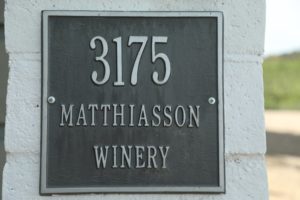
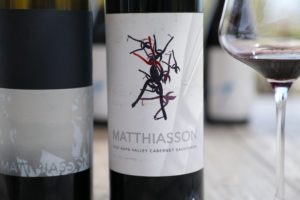
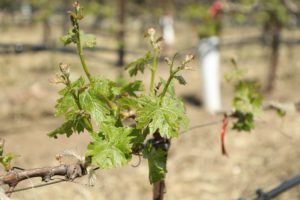 The 2023 Matthiasson Rosé is 40% Grenache, 32% Barbera, 15% Mourvèdre and 13% Counoise all from the Windmill and Muller Vineyards in the Dunnigan Hills AVA of Yolo County. It is light copper in color; the bouquet smells fresh and both floral and fruity including of raspberry, dried rose petals with an accompanying light citrus zest. Zesty, minerally and mouth watering, the palate reveals flavors of grapefruit, lime, not fully ripe Sierra gooseberry and green apple. Nuanced decisions in the cellar do in fact influence the resulting character of wine and with this bottling, that can be felt in its texture. It is supple with an almost saline character. Finishes bright and crisp and with a lively burst of acidity that continues to linger.
The 2023 Matthiasson Rosé is 40% Grenache, 32% Barbera, 15% Mourvèdre and 13% Counoise all from the Windmill and Muller Vineyards in the Dunnigan Hills AVA of Yolo County. It is light copper in color; the bouquet smells fresh and both floral and fruity including of raspberry, dried rose petals with an accompanying light citrus zest. Zesty, minerally and mouth watering, the palate reveals flavors of grapefruit, lime, not fully ripe Sierra gooseberry and green apple. Nuanced decisions in the cellar do in fact influence the resulting character of wine and with this bottling, that can be felt in its texture. It is supple with an almost saline character. Finishes bright and crisp and with a lively burst of acidity that continues to linger.
This wine was made entirely whole-cluster direct to press, kept in a cold tank for 24 hours before being transferred into stainless steel barrels for a higher ratio of lees contact. The barrels are kept closed, so there is no need for topping. And the wine is not racked nor are the lees stirred. It is then filtered before bottling and quickly released to market early the following year post harvest.
The 2021 Matthiasson Refosco is from the Matthiasson Vineyard; this wine is deep ruby with a red fruited and expressive bouquet including of cranberry, red cherry, currant, red plum and dried sage. There is also a light spice component present here as well but it is more of a subtle character. Vivid was the first word we wrote to describe the entry. The palate is energetic with a mouthwatering and dancing acidity. It offers flavors of sour plum, not fully ripe red cherry, cranberry and red currant. The tannins are gravelly but not overly pronounced. The finish persists with a red fruited tartness with a light but also lasting drying character which ultimately outpaces the fruit. At the winery, they call this their “Italian Pinot Noir” as its distant heritage is both Pinot Noir and Syrah. We would love to pair this with a tomato based pasta.
The 2019 Matthiasson Petite Sirah Windmill Vineyard (Dunnigan Hills, Yolo County) is medium to deep ruby; from the color alone we would not be able to identify this as a Petite Sirah in a blind tasting. It is not the ‘typical’ dark, inky and opaque characters that we are used to. The elegant aromatics alone will quickly invite a taste; simply stated, they smell beautiful. They include primarily fruited scents of raspberry, cherry, and pomegranate juice with also dried rose petals, potpourri and dry soil. Flavors include red cherry, raspberry, and currant. Fresh, lively and full of energy this wine has years of life head of it before it peaks. The tannins are lightly grainy and broadly distributed across the palate. The finish lingers brightly with a pronounced tartness. It is super youthful 5 years post vintage at the time of our tasting. And after spending time with this wine, we found we needed an entirely different set of adjectives to describe this bottling compared to most Napa Valley grown and produced Petit Sirahs. We chose, elegant, sophisticated and balanced. Unfortunately this was the last vintage from this particular vineyard before the vines were pulled out.
The 2021 Matthiasson Syrah Hulet Vineyard Mt. Veeder is 100% varietal; this wine is deep ruby in color. The bouquet is both blue and red fruited with scents of blueberries, assorted Alaskan tundra berries, violets, and a sanguine character at play here as well, including rusting iron in hot sun. Fresh, vivid and focused; the palate offers flavors of currant, tart plum and sour cherry with a lingering drying character. One can feel a density of tannins in this bottling- more than we have noticed in the other Matthiasson reds. They fully coat the palate with a gravelly and dusty character which outlasts the fruit on the finish. Tart and bright with a red-fruited finish. This is the first time that Matthiasson made wine from this high elevation vineyard. The wine was fermented 100% whole whole cluster and then aged for 10 months in neutral French oak barrels.
The 2020 Matthiasson Napa Valley Phoenix Vineyard; this wine is a pure varietal expression of what is planted in the vineyard. The original vines date from 1982, primarily planted to Cabernet Sauvignon, Cabernet Franc and Merlot. However due to its original very wide spacing, after the Matthiassons purchased the property they added additional rows in between parts of this vineyard. Each variety is fermented separately and then blended prior to bottling. This wine is deep ruby; the bouquet sports aromas of jalapeno pepper, dried sage, thyme and a dried red chili spice character. Savory. We like to describe wines with aromatic character as having more complexity and layers beyond just fruit – and this wine certainly delivers in that regard. The palate is brightly lit with flavors of not fully ripe cherry, red cherry, currant, Icelandic crow berries, red currant jam and boiled cranberries. The palate lingers with a freshness, a brightness, is tart and most definitely red fruited. A drying character persists. The tannins are dusty, gravelly and anchor an memorable long-lasting and mouth-watering finish. This wine has loads of life ahead of it with the proper cellaring. 12% alcohol
The 2020 Matthiasson Napa Valley Cabernet Sauvignon is 95% Cabernet Sauvignon, 4% Petit Verdot and 1% Cabernet Franc, from six vineyards within Coombsville (the largest percentage) Oak Knoll and Rutherford. This wine is deep ruby in color; it is always refreshing to smell the inherent varietal characteristics of Cabernet Sauvignon, aromatics that are typically ‘grown’ out of the variety by most Napa Valley producers. The bouquet offers scents of dried sage, creosote, dried rose petals, light cedar box along with raspberry. Give this wine time in the glass and the fruit becomes more expressive. This is a fresh and lively expression of Napa Valley Cabernet Sauvignon. We hope that we could easily pick this wine out of a blind tasting against high octane and ripe bottles of other Napa Valley Cabernet Sauvignons. The palate is energetic and shows quite well 4 years post vintage at the time of our tasting. It offers flavors of red plum, sour cherry and currant. The texture is a hallmark character. If one holds this wine in their mouth long enough it feels rounded and almost creamy. Lingers savory and mouth watering with a light dried tobacco leaf. About 80% of the grapes for this wine were harvested prior to the Glass Fire, so production is slightly lower than normal. This wine was aged 20% in new French oak barrels for 18 months with the wine from each vineyard site kept sperate until the final blending.
The 2014 Matthiasson Napa Valley Cabernet Sauvignon shows floral aromas with baking spices and notes of spicy red plums. This wine is savory on both the bouquet and the palate. It is lighter bodied wine of this variety featuring excellent balance. We wrote the word harmonious to describe its overall character. The palate offers bright and refreshing flavors of red cherry and noticeably textured but fine-grained tannins anchoring a supple finish. Mouthwatering throughout the palate. 13.4% alcohol. For reference, the first vintage of Matthiasson Cabernet Sauvignon was in 2010.
The 2016 Matthiasson Red Wine Napa Valley is 86% Cabernet Sauvignon, 7% Petit Verdot, 5% Merlot and 2% Cabernet Franc. 13.3% alcohol. This wine was tasted eight years post vintage and still clearly shows like a younger bottling. And we would expect nothing less from Matthiasson. This wine is deep ruby; like the bouquet, the palate is also red fruited including flavors of red, cherry, currant and cranberry accompanied by dried herbs. Lingers with a light tartness. Both gravelly tannins and fruit parallel each other on the extended finish. This wine displays freshness and vitality; its balance is noteworthy even though it’s arguably the most robust of the Matthiasson reds. Can be aged up to 30 years. Pair with a hearty beef stew.
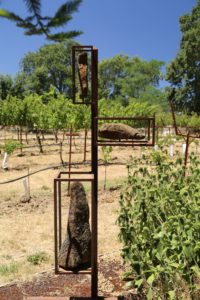
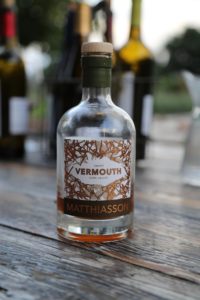 The 2015 Matthiasson Spring Hill Pinot Noir (Petaluma Gap) shows very bright higher-toned fruits on the bouquet including cranberry along with nuances of dried dust or first rain on dusty rock (petrichor). Lively on the palate with singing acidity, the fruit along with tannins feel dusty and earthy and linger for quite some time. This is a highly food friendly wine which is rich in flavor while maintaining an elegant feel across the palate.
The 2015 Matthiasson Spring Hill Pinot Noir (Petaluma Gap) shows very bright higher-toned fruits on the bouquet including cranberry along with nuances of dried dust or first rain on dusty rock (petrichor). Lively on the palate with singing acidity, the fruit along with tannins feel dusty and earthy and linger for quite some time. This is a highly food friendly wine which is rich in flavor while maintaining an elegant feel across the palate.
The 2012 Matthiasson Red Hen Vineyard Merlot (Oak Knoll District, 100% varietal) shows bright aromatics in the glass with cherry being the prominent fruit framed by notes of dessert spices and chocolate aromas. Flavors of red cherry show along with a lively and engaging finish. This wine is well layered on the palate featuring attention-catching acidity. This wine was aged in a combination of new and used French oak barrels for 20 months. Grapes from this vineyard were sold to Christian Brothers from the 1950s through the 1970s.
The 2005 Matthiasson Red Wine Napa Valley is a 60% Merlot and 40% Cabernet Sauvignon blend. The 2005 vintage was sourced from two hillside vineyards in Napa Valley’s Oak Knoll district. It is an elegant wine with engaging aromatics. It is dark purple in color with juicy fruit and nuances of chocolate on the palate, supported by smooth tannins. This was only their 3rd vintage of this particular bottling; it was aged in 50% new French oak (Taransaud), and 50% neutral barrels for 18 months. 14.6% alcohol.
For those arriving to Napa Valley early in their career and looking to expand their palate, these wines can have an impactful first impression and should lead one to exploring more of both the Matthiasson wines and similar producers.
—
Note their wine label; it is one of the more intriguing Napa winery labels we have come across on our epic project which includes 1,150 Napa Valley wineries or brands personally visited, tasted the wines and extensively written about. It is an homage to both the vineyards and those who work with the vines. Images of vintage pruning shears line the label on every one of their wines; the wines with only one pruning shear on the label indicate more limited production wines. Noted graphic artist, Michael McDermott is the genius behind this design.
Matthiasson maintains decent domestic distribution in select states as well as some distribution internationally including in Thailand. We hosted an intimate gathering at the Riedel Wine Bar in Gaysorn Plaza in central Bangkok in late February 2024 showcasing select Matthiasson wines. Our talk promoted the Napa Wine Project, the Napa Valley, and the Matthiasson story paired with Matthiasson wines and selected delicious bites prepared by the Riedel chef.
One can find the Matthiasson wines locally in Napa Valley at ACME Wine Shop in St. Helena and also at several local restaurants in the valley including Mustards Grill, Cole’s Chop House in the city of Napa and Press in St. Helena.
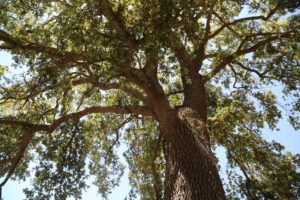
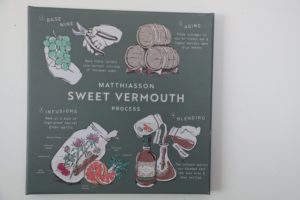 Those familiar with their wine for a number of years may remember their old warehouse type location (Tannery Winery) in the town of Napa. Interestingly enough, the Tannery Complex now houses a number of tasting rooms for small Napa based brands. After Matthiasson moved out of the tannery building, they produced their wine at several locations including Bin to Bottle, Judd’s Hill and Silenus Winery. In 2017 they purchased a small existing winery (originally called Phoenix Winery) slightly to the west of their home vineyard located just above the valley floor; one can see the winery location from their home vineyard. Steve originally discovered this property because he was managing a bordering Chardonnay vineyard. Tastings by appointment are conducted here.
Those familiar with their wine for a number of years may remember their old warehouse type location (Tannery Winery) in the town of Napa. Interestingly enough, the Tannery Complex now houses a number of tasting rooms for small Napa based brands. After Matthiasson moved out of the tannery building, they produced their wine at several locations including Bin to Bottle, Judd’s Hill and Silenus Winery. In 2017 they purchased a small existing winery (originally called Phoenix Winery) slightly to the west of their home vineyard located just above the valley floor; one can see the winery location from their home vineyard. Steve originally discovered this property because he was managing a bordering Chardonnay vineyard. Tastings by appointment are conducted here.
This winery houses some but not all of their production with barrels housed at another winery in the Oak Knoll District and as of our latest update to this review, also at Bin 2 Bottle located south of the city of Napa. In mid 2023 a beautiful ceramic-mosaic mural titled, The Secret Life Of Vineyards, was installed on the outside south facing wall of their winery. It depicts the changing of the seasons from the perspective of both farming and insects. The idea for this mural was originally from Entomology 001, “Art, Science and the World of Insects,” taught by Professor Diane Ullman and assistant professor Emily Meineke.
For more information, to join their mailing list or wine club, to schedule a tasting or to purchase wines, visit: www.matthiasson.com and the no longer updated but some interesting blog posts here: http://matthiassonvineyard.blogspot.com
Winery, Oak Knoll
Old Winery, Tannery District
We keep these photos here for nostalgia purposes!






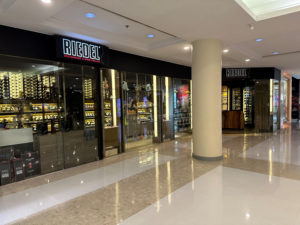
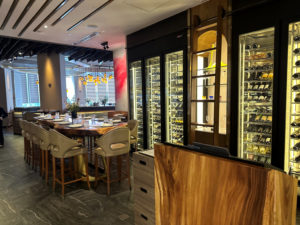
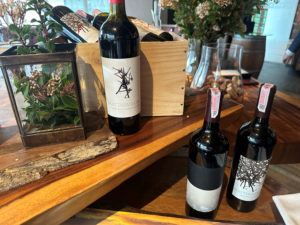
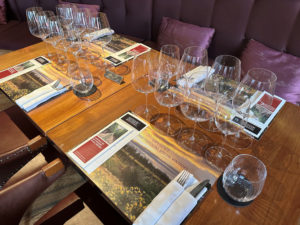
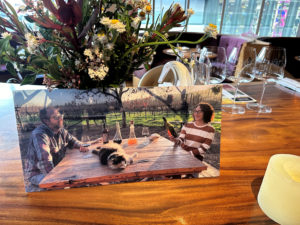
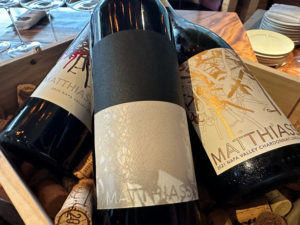
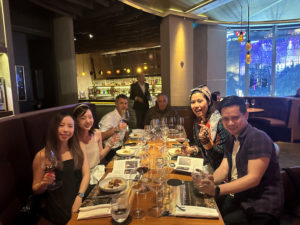
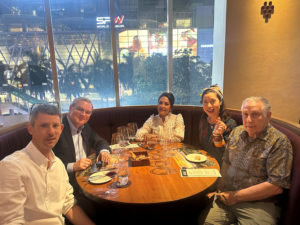
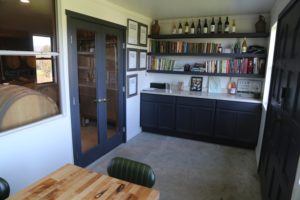
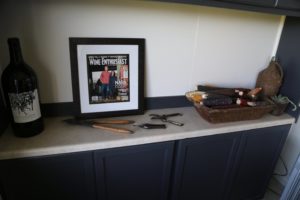
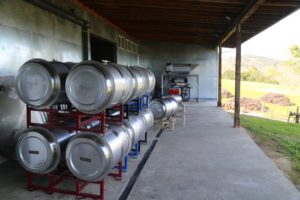
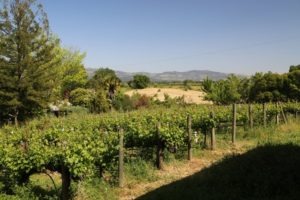
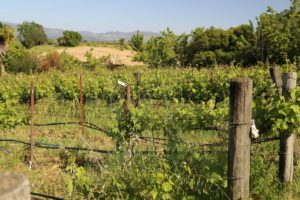
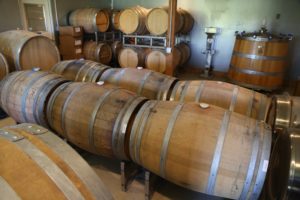
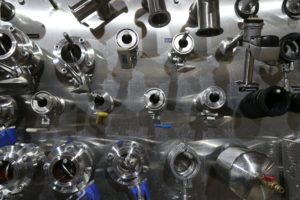
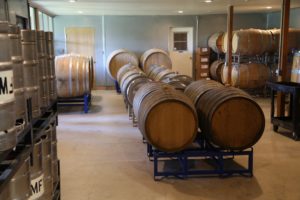

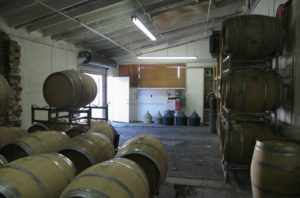
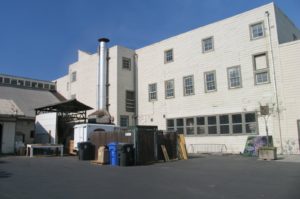
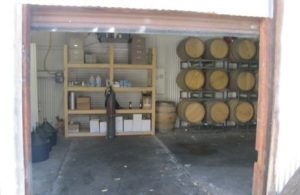
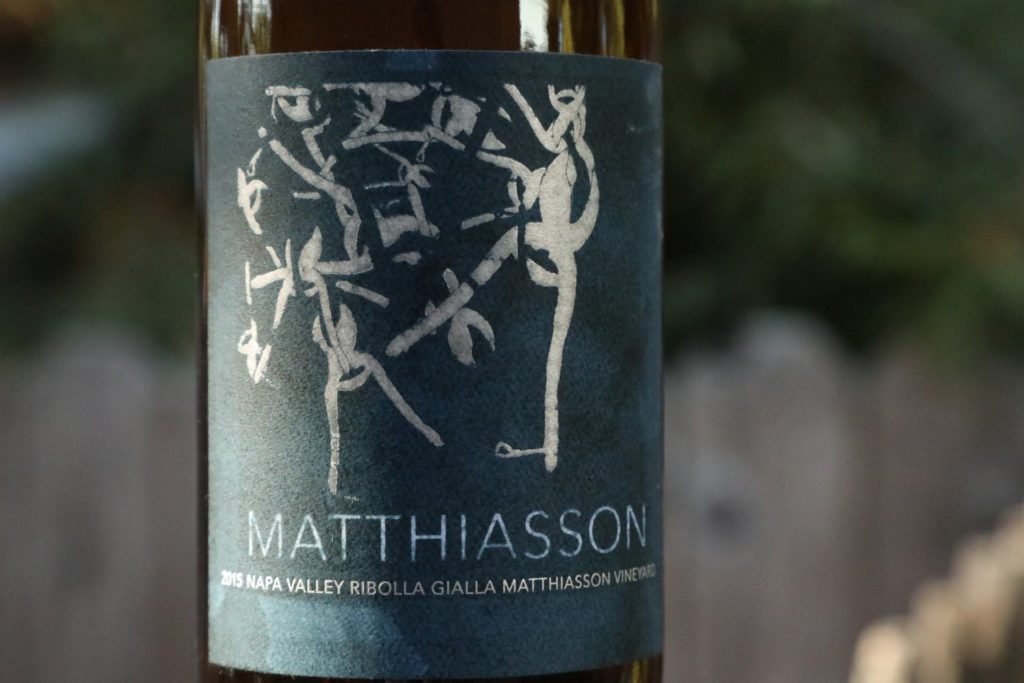
Where can I get information on visiting?
I would reach out directly to Steve or Jill using the contact form on their website here: http://www.matthiasson.com/Contact
Hi Dave,
Just wanted to let you know that we are no longer at Silenus, we are now at Bin to Bottle. Interested folks should reach out to us directly. Thanks for the nice article, the old photos of the Tannery winery are classic.
Cheers, Steve
Thanks Steve for the info. Appreciate you stopping by. I’ve just updated accordingly here. I need to revisit you guys at some point – my initial visit with you was very early on in the project and my reviews have become way more in-depth since then. Along with my new reviews, I continue to revisit numerous Napa wineries/producers for updates.
~ Dave
Hello there, we would like to visit. We are in napa for 1 more day. Thank you
Elvira and Dave
Elvira – I heard the Matthiassons purchased an existing winery in 2017 (close to their home vineyard) and hopefully they will be doing tastings there once settled in.